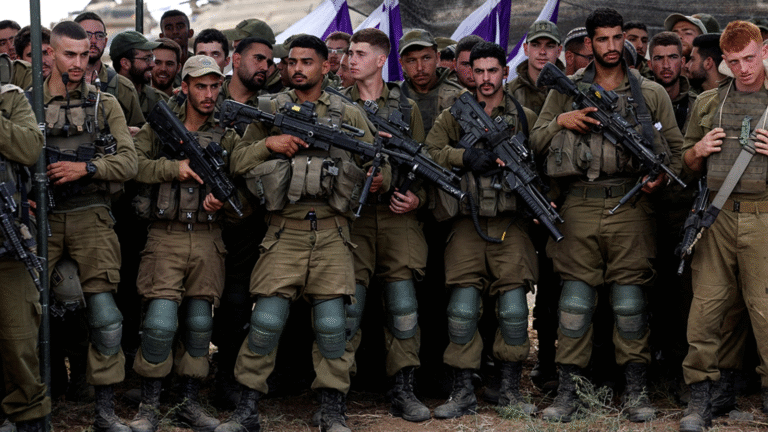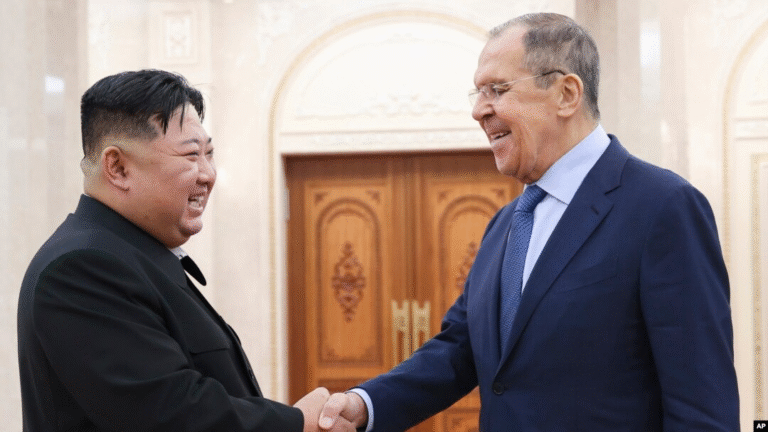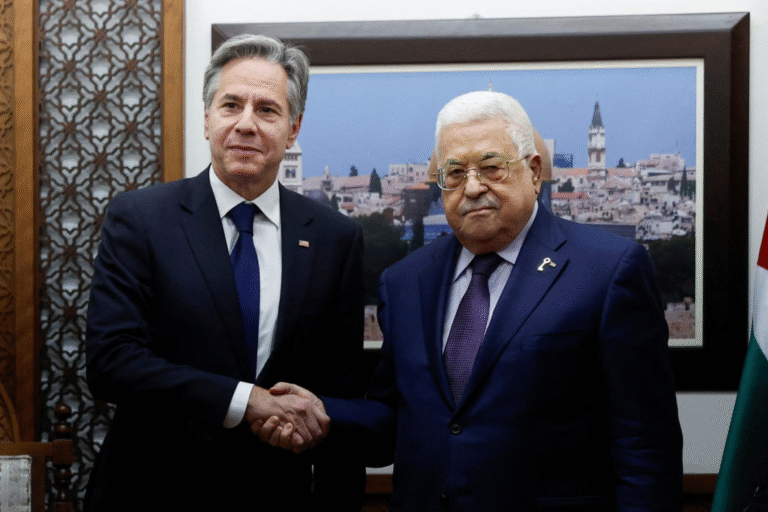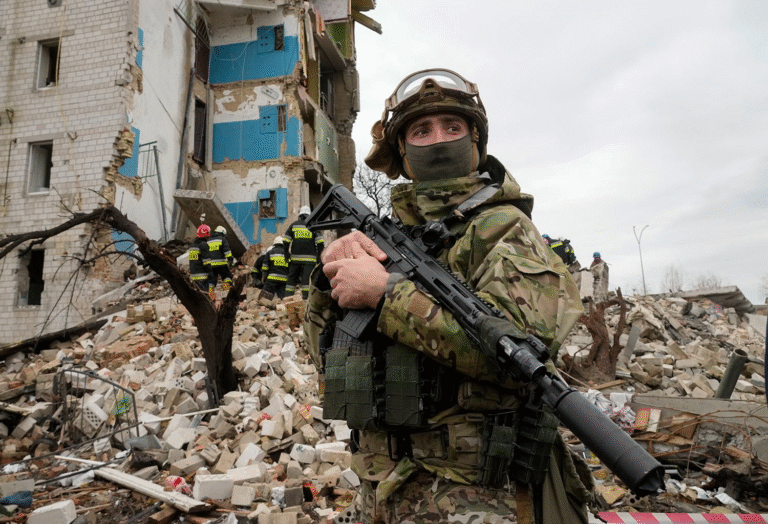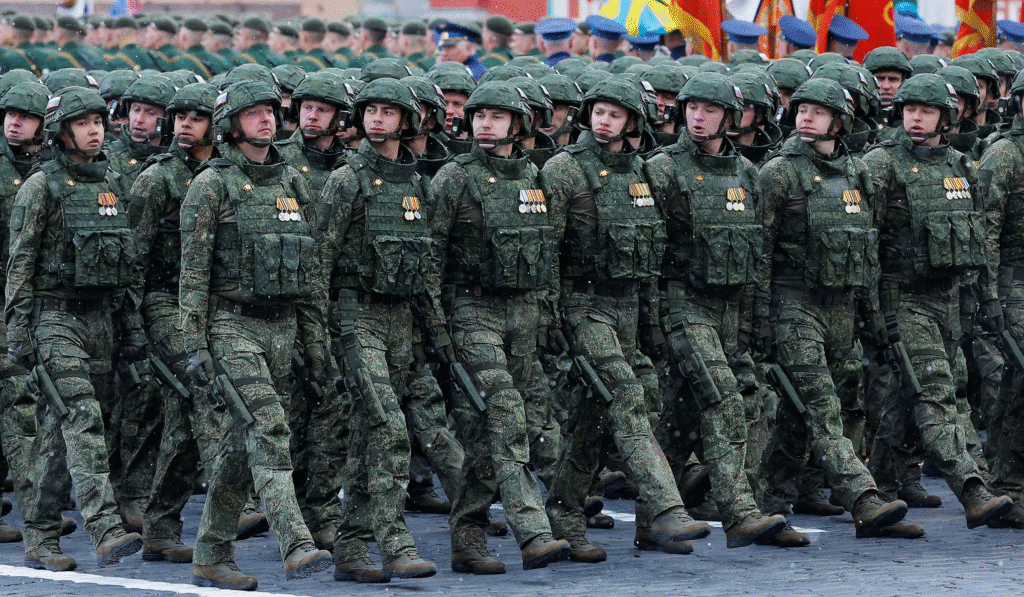
Russian service members, who were involved in the country’s military campaign in Ukraine,
march in columns during a military parade on Victory Day, which marks the 79th anniversary of
the victory over Nazi Germany in World War Two, in Red Square in Moscow, Russia, May 9, 2024/REUTERS/Maxim Shemetov
Owen Butler
The America-Eurasia Center
www.EurasiaCenter.org
Ukraine-Russia Program
Eurasia News
Russian Use of Disposable Infantry in the Invasion of Ukraine
The Russian prison system has become invaluable to the Russian military in generating
manpower and “disposable infantry” for its continued invasion of Ukraine without the political
risks of conscription, as convicts are viewed as being “expendable”. As demonstrated by the
establishment of “Storm V” units and the indefinite extension of the contracts of convict recruits,
the Russian military will likely double down on its use of convict recruits and “disposable
infantry”. While the practice first originated in the early stages of the war, primarily within the
Wagner Group, convicts now make up both a significant portion of Russian military forces and a
disproportionate percentage of personnel losses in the invasion. These “disposable infantry” units,
organized under “Storm Z” and “Storm V” battalions, demonstrate a remarkable shift in Russian
military doctrine, which has been driven by the lessons learned through the failure of their military
force structure at the beginning of the Russian invasion of Ukraine, as well as various battles
including the Battle of Bakhmut. These “Storm Z” and “Storm V” battalions are used to skirmish
with Ukrainian defensive positions until they are killed, thereby exposing Ukrainian positions,
attracting Ukrainian forces, and allowing for a Russian assault or specialized infantry to exploit
weak points in Ukrainian lines or target more fortified Ukrainian positions. However, the usage of
convict recruits on this scale has led to incidents both on the frontline and the home front. Convict
recruits often engage in violations of the Geneva Convention while deployed and have high
reoffending rates upon returning to Russia, resulting in international condemnation.
Wagner’s Convict Recruits
The Wagner Group, an infamous Russian private military corporation operating with the
direct approval of President Putin, began recruiting convicts from Russian prisons during the
summer of 2022.1 Yevgeny Prigozhin, the former leader of the Wagner Group, began touring
Russian prisons, promising unconditional pardons and a monthly salary of about 100,000 rubles in
exchange for fighting on the frontlines in Ukraine for six months. To many prisoners serving long
sentences, it was an appealing deal. According to Vladimir Osechkin, a Russian human rights
activist and the head of the Gulagu.net anti-corruption project, more than 30,000 Russian convicts
were recruited through this scheme.2 Some of these convicts recruited into Wagner’s ranks included
murderers, thieves, and kidnappers. However, convicts recruited into Wagner Group were mainly
composed of those with previous military experience, experience typically gained as previous
draftees under Russia’s 1-year conscription system.3
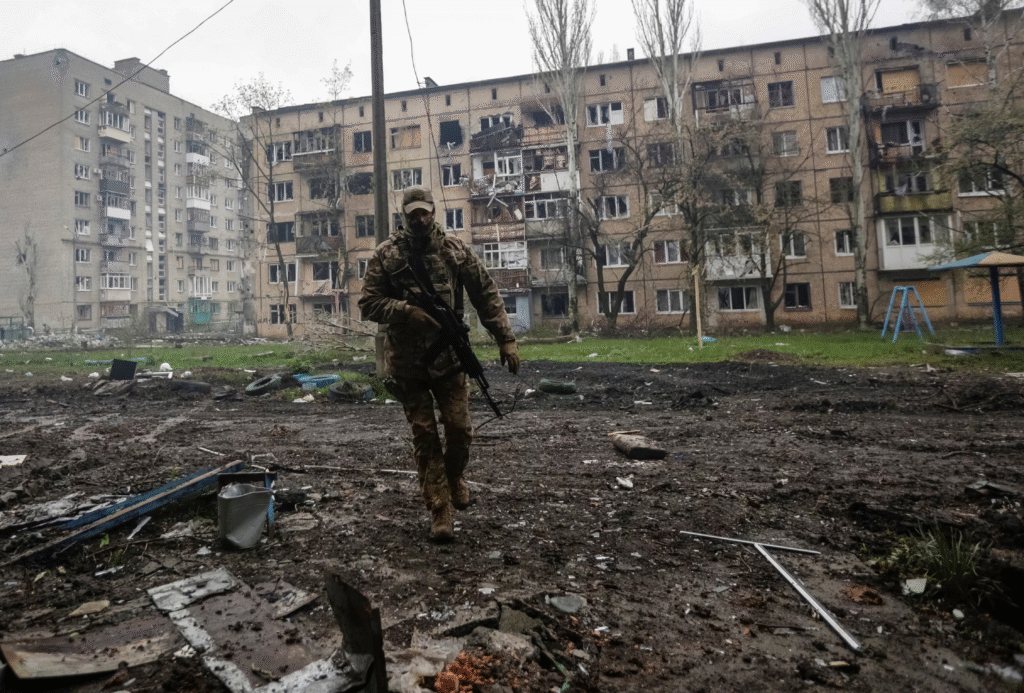
A Ukrainian service member walks near damaged residential buildings in the frontline town of Bakhmut, April 21.
REUTERS/Anna Kudriavtseva
The Battle of Bakhmut
Wagner Group’s convict recruits were heavily utilized in the battle of Bakhmut, where they
served as frontline assault units engaged in brutal urban warfare. Convict recruits were utilized
similarly to WWI assault groups. Convict groups served as first-wave attackers, advancing along
assigned avenues of approach until encountering Ukrainian positions. At that point, they would
attempt to assault and seize these positions, allowing follow-on forces, often more experienced and
professional Wagner fighters, to exploit breaches in Ukrainian lines. If an assault were to fail,
Ukrainian positions revealed by the attack would be subject to artillery bombardment, and the
attacks would be repeated.4
Wagner Group’s convict recruits suffered heavy casualties during these attacks, with some
units suffering up to 80% casualty rates according to some Ukrainian officials.5 A total of 19,547
Wagner Group personnel died in the battle, 17,175 of those being recruited convicts.6 However,
these attacks proved effective to the point that Wagner Group declared victory in the battle for
Bakhmut, having seized a vast majority of the city and successfully handing the responsibility of the
city over to the Russian Ministry of Defense.7 The lessons learned from this battle would spur
developments throughout the Russian military, with many of the tactics and strategies utilized by
the Wagner Group later applied by general Russian forces in harsh urban warfare.
Storm Z and Storm V
The existence of “Storm-Z” units within the Russian army was discovered on April 6th , 2023,
from captured documents released by a Ukrainian reserve officer.8 Heavily influenced by
Wagner’s recruitment of convicts and their utilization in the battle of Bakhmut, these units are made
up of a combination of recruited civilian convicts and Russian soldiers under punishment for actions
such as disobedience, insubordination, or alcoholism.9 In a similar serve-to-be-free scheme as the
Wagner group, recruited convicts were promised pardons after six months of service in Ukraine and
would subsequently be allowed to return home.10 Despite being called battalions, these units are
company-sized, comprised of 100 personnel split into varying-sized squads.11 Additionally, these
units were formed outside the traditional Russian military structure and are attached to existing
Russian regiments and brigades.
According to the BBC, by September of 2023, Russian officials had ceased recruitment for
“Storm Z” units and had begun recruiting for “Storm V” units.12 Despite being organized and
utilized in the same manner as “Storm Z” units, “Storm V” units differ significantly in the contracts
assigned to recruits. Instead of pardoning recruits after six months of service, convict recruits in
“Storm V” units are given year-long contracts that are indefinitely extended, with their release from
prison being conditioned on state decoration, becoming incapacitated, or until the war comes to an
end. Additionally, rather than receiving a full pardon upon release from prison, “Storm V” convict
recruits are given a “conditional release”, which allows for sentences reflective of their previous
crimes if they commit new crimes.13 With no end to the conflict in sight, it appears that the Russian
military is keen on retaining as much manpower as possible; these new, far more restrictive
contracts may be an effective method of doing so.
Recruitment and Casualty Rates
Russian convicts now make up a significant portion of Russian personnel, with the
Ukrainian Foreign Intelligence Service estimating that the Russian military had recruited between
140,000 and 180,000 convicts as of January 1, 2025.14 The mass recruitment of inmates has emptied
so many Russian prisons that some are being closed due to a lack of prisoners.15 According to
Russian Deputy Justice Minister Vsevolod Yukolov, the Russian prison population dropped to a
record low of 266,000 as of October 2023, a sharp decline from 420,000 in February 2022.16
Russian convicts also make up a disproportionate number of Russian casualties. Mediazona,
in collaboration with BBC News Russian service, has confirmed the deaths of more than 97,944
Russian military personnel, of which 16,074 are Russian convicts. Convicts represent 16.4 percent
of total confirmed casualties, just behind volunteers at 24.2 percent.17 The high casualty rate among
recruited convicts is attributed to the tactics and methods employed as “expendable” units.
The “Expendables”
The designation of “expendable” has connotations beyond tactical aims. It establishes the
idea that certain types of casualties are more “palatable” than others. Stated simply by Aleksandr, a
Russian convict recruit captured by Ukrainian forces: “When civilians are mobilized, they are
ripped from their families, their jobs…As for us, we’ve got nothing to lose.” A New York Times
investigation found that, of the close to 200 convicts recruited from a Russian prison known as IK6,
most had been convicted of selling drugs, and one in three were convicted of murder.18 Data
gathered by Mediazona from Wagner Group documentation additionally showed that of the
confirmed 501 penal facilities that Wagner Group recruited convicts from, 227 were maximum
security prison colonies, with another 28 being super-maximum security.19
The nature of these “expendable” infantry units, being made up of mainly convicts, has led
to instances of abuse both at the frontlines and within domestic households. According to a
Ukrainian-based NGO called Media Initiative for Human Rights, Wagner Group, whose forces
were primarily made up of recruited convicts, has committed a variety of atrocities, including the
abuse, torture, and killing of Ukrainian Prisoners of War (POWs) and the intentional killing of
Ukrainian civilians, including children.20 Atrocities such as the execution of Ukrainian POWs have
also been linked to “Storm Z” and “Storm V” units, with defectors from these units alleging
widespread toleration for violations of the Geneva Conventions.21

Credit: Sergiy Kyslytsya via X
Instances of recidivism by convicts returning home after serving on the frontlines in Ukraine
have been extensive. In 2024, the number of domestic crimes classified as “grave” reached its
highest level in thirteen years, with the Russian Ministry of Internal Affairs highlighting the war in
Ukraine as one of several main factors behind the increased rate.22 Additionally, according to
Vyorstka, a Russian independent news publication, 107 Russian citizens have been killed and
another 100 seriously injured by “veterans of the special military operation”, with a majority of
those crimes being committed by pardoned convicts.23 The UN Human Rights Council’s Special
Rapporteur on Russia, Mariana Katzarova, condemned the Russian military’s recruitment of violent
convicts, as “many of them who return…have been perpetrating new violent crimes” such as
violence against women, girls, and children, including sexual violence and killings, and that their
status as “heroes from the special military operation is used by judges to pass lenient sentences even
for crimes as murder.”24
Conclusion
The Russian military has undergone a significant doctrinal shift based on lessons learned
throughout the conflict. They have abandoned their battalion tactical group system of combined
arms units and have shifted towards a reliance on a combination of line, assault, specialized, and
“expendable” infantry formations, with a growing dependence on the latter. By utilizing poorly
equipped and poorly trained “expendable” infantry, the Russian military has been able to identify
weak points and firing positions along Ukrainian lines for assault or specialized infantry to exploit
and target.
While originating with the Wagner Group, the recruitment of convicts has become
institutionalized across the Russian military, cemented by the establishment of the Storm V units
and the indefinite extension of the contracts of convict recruits. The widespread usage of these
convict recruits allows Russia to sustain and generate manpower without the political risks of mass
conscription, due to the perceived “expendability” of convicts in comparison to Russian civilians.
This “expendable” nature and how they have been employed has resulted in convicts suffering from
disproportionate casualty rates compared to other Russian military units.
Yet the mass recruitment of convicts is not without its drawbacks, as it has resulted both in
atrocities committed on the frontlines, as well as an increase in violent crime within Russia when
pardoned convicts return home from combat. Despite this, the usage of convict recruits and
“disposable infantry” by the Russian military will likely remain a central component of Russia’s
military doctrine for the foreseeable future, playing a significant part in shaping both the battlefield
and Russian society.
- Lebedev, Filipp, and Felix Light. 2023. “Wagner’s Convicts Tell of Horrors of Ukraine War.” Reuters, March 16, https://www.reuters.com/investigates/special-report/ukraine-crisis-russia-wagner/. ↩︎
- Brugen, Isabel van. 2022. “Inside the Wagner Group: The Criminals and Contractors Fighting Putin’s War.”
Newsweek. December 30, 2022. https://www.newsweek.com/inside-wagner-group-criminals-contractors-putins-war1770392. ↩︎ - Lebedev, Filipp, and Felix Light. 2023. “Wagner’s Convicts Tell of Horrors of Ukraine War.” Reuters, March 16, https://www.reuters.com/investigates/special-report/ukraine-crisis-russia-wagner/ ↩︎
- Perun. 2022. “Bakhmut & the Ukraine Trench War – Fortifications, Attrition, and Lessons.” Www.youtube.com. December 18, 2022. https://youtu.be/4fqHERDXVpk?t=1264. ↩︎
- Lister, Tim, Frederik Pleitgen, and Victoria Butenko. 2023. “Deadly and Disposable: Wagner’s Brutal Tactics in
Ukraine Revealed by Intelligence Report.” CNN. January 24, 2023. https://www.cnn.com/2023/01/23/europe/russiawagner-tactics-report-ukraine-intl/index.html. ↩︎ - Дата-отдел. “The Price of Bakhmut. We Reveal the Staggering Toll of Russia’s Bloodiest Battle since WW2 and Wagner’s Inmates Recruited to Fight It.” Mediazona, June 10, 2024. https://en.zona.media/article/2024/06/10/wagnertrl. ↩︎
- Stepanenko, Kateryna. 2023. “Institute for the Study of War.” Institute for the Study of War. May 24, 2023.
https://www.understandingwar.org/backgrounder/kremlin%E2%80%99s-pyrrhic-victory-bakhmut-retrospective-battlebakhmut. ↩︎ - Hird, Karolina, Riley Bailey, Angela Howard, Grace Mappes, Layne Philipson, and Mason Clark. 2023. “Russian Offensive Campaign Assessment, April 6, 2023.”
https://www.understandingwar.org/sites/default/files/Russian%20Offensive%20Campaign%20Assessment%2C%20April%206%2C%202023%20PDF.pdf. ↩︎ - Nikolskaya, Polina , and Maria Tsvetkova. 2023. “Putin’s ‘Punishment Battalions’ Full of Convicts and Drunk Recruits.” The Independent. October 3, 2023. https://www.independent.co.uk/news/world/europe/russia-war-ukrainestorm-z-b2423103.html. ↩︎
- Fokht, Elizaveta , Ilya Barabanov, and Olga Ivshina. 2024. “Ukraine War: No More Easy Deals for Russian Convicts Freed to Fight.” Www.bbc.com, February 4, 2024. https://www.bbc.com/news/world-europe-68140873. ↩︎
- Battersby, Blair, and Dorsel Boyer. 2023. “Russian Assault Groups’ Evolution in Ukraine – TRADOC G2
Operational Environment Enterprise.” TRADOC G2 Intelligence. US Army Training and Doctrine Command. December 15, 2023. https://oe.tradoc.army.mil/2023/12/15/tradoc-russian-assault-groups-evolution-in-ukraine/. ↩︎ - Fokht, Elizaveta , Ilya Barabanov, and Olga Ivshina. “Ukraine War: No More Easy Deals for Russian Convicts
Freed to Fight.” Www.bbc.com, February 4, 2024. https://www.bbc.com/news/world-europe-68140873. ↩︎ - Fokht, Elizaveta , Ilya Barabanov, and Olga Ivshina. “Ukraine War: No More Easy Deals for Russian Convicts Freed to Fight.” Www.bbc.com, February 4, 2024. https://www.bbc.com/news/world-europe-68140873. ↩︎
- Szru.gov.ua. “Ув’язненим за війну проти України більш не платитимуть – кремль хоче зекономити гроші,” https://szru.gov.ua/news-media/news/uvyaznenym-za-viinu-proty-ukrainy-bilsh-ne-platytymut–kreml-khochezekonomytyhroshi?fbclid=IwY2xjawHj6INleHRuA2FlbQIxMAABHRWUcry70t4KCNEn_rYhkyhiYsBGbx5bPTYR6dvu9n6qdqT-lD5RH7wHRA_aem_ADKTVHdpN8Z9OPsEwrMeFA. ↩︎
- “Russia Begins Closing Prisons as Both Convicts and Staff Head to War.” 2024. Www.rferl.org. Radio Free Europe, Radio Liberty. April 3, 2024. https://www.rferl.org/a/russia-prisoners-recruited-war-in-ukraine/32889797.html. ↩︎
- Ilyushina, Mary. “Russia Prison Population Plummets as Convicts Are Sent to War.” Washington Post, October 26,
https://www.washingtonpost.com/world/2023/10/26/russia-prison-population-convicts-war/. ↩︎ - “Russian Casualties in Ukraine. Mediazona Count, Updated.” 2024. Mediazona. February 14, 2025.
https://en.zona.media/article/2022/05/11/casualties_eng ↩︎ - Kurmanaev, Anatoly, Ekaterina Bodyagina, Alina Lobzina, Oleg Matsnev, and Gray Beltran. “A Prison at War: The Convicts Sustaining Putin’s Invasion.” The New York Times, December 4, 2023, sec. World.
https://www.nytimes.com/2023/12/04/world/europe/russia-prison-wagner-ukraine.html.
↩︎ - Дата-отдел. “The Price of Bakhmut. We Reveal the Staggering Toll of Russia’s Bloodiest Battle since WW2 and Wagner’s Inmates Recruited to Fight It.” Mediazona, June 10, 2024. https://en.zona.media/article/2024/06/10/wagnertrl. ↩︎
- Тараш, Лідія, Марія Климик, and Тетяна Катриченко. “Wagner Group. Beyond Accountability – MIHR.” МІПЛ, October 16, 2023. https://mipl.org.ua/en/wagner-group-beyond-accountability/. ↩︎
- Cheliak, Sofiia . “‘The Battalion Had a Queue for Soldiers Who Wanted to Shoot Prisoners.’ How Russia Executes Ukrainian Soldiers.” Ukrainska Pravda, March 18, 2025. https://www.pravda.com.ua/eng/articles/2025/03/18/7503349/. ↩︎
- Telegram. “Вёрстка,” 2025. https://t.me/svobodnieslova/5616. ↩︎
- Редакция «Вёрстки. “Ветераны ‘СВО’, вернувшись в Россию, продолжают убивать и калечить.” Вёрстка, April 25, 2024. ↩︎
- Katzarova, Mariana . “HRC – Press Conference: Special Rapporteur on the Russian Federation.” UN Web TV, October 20, 2024. https://webtv.un.org/en/asset/k1p/k1pla76s8c. ↩︎
